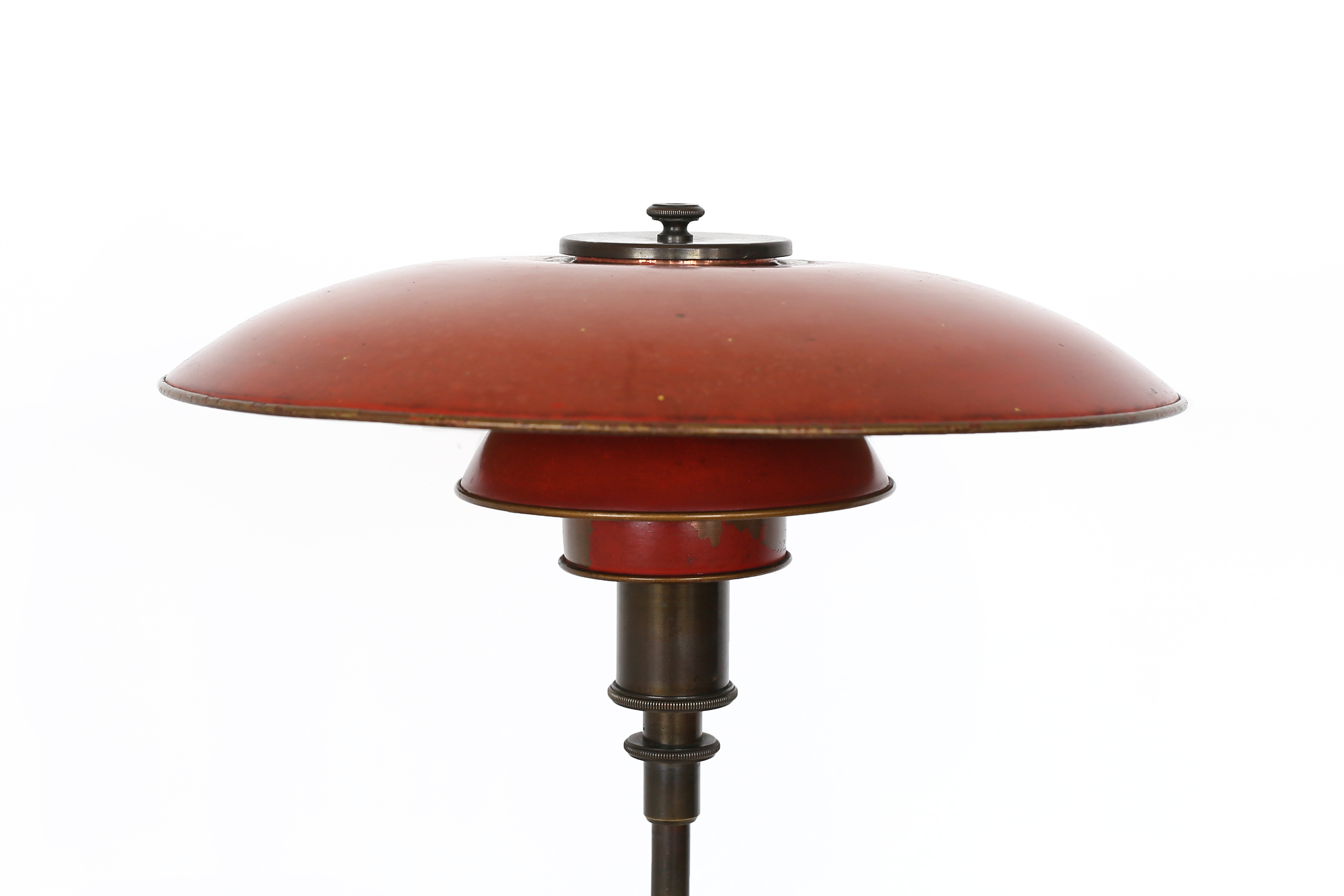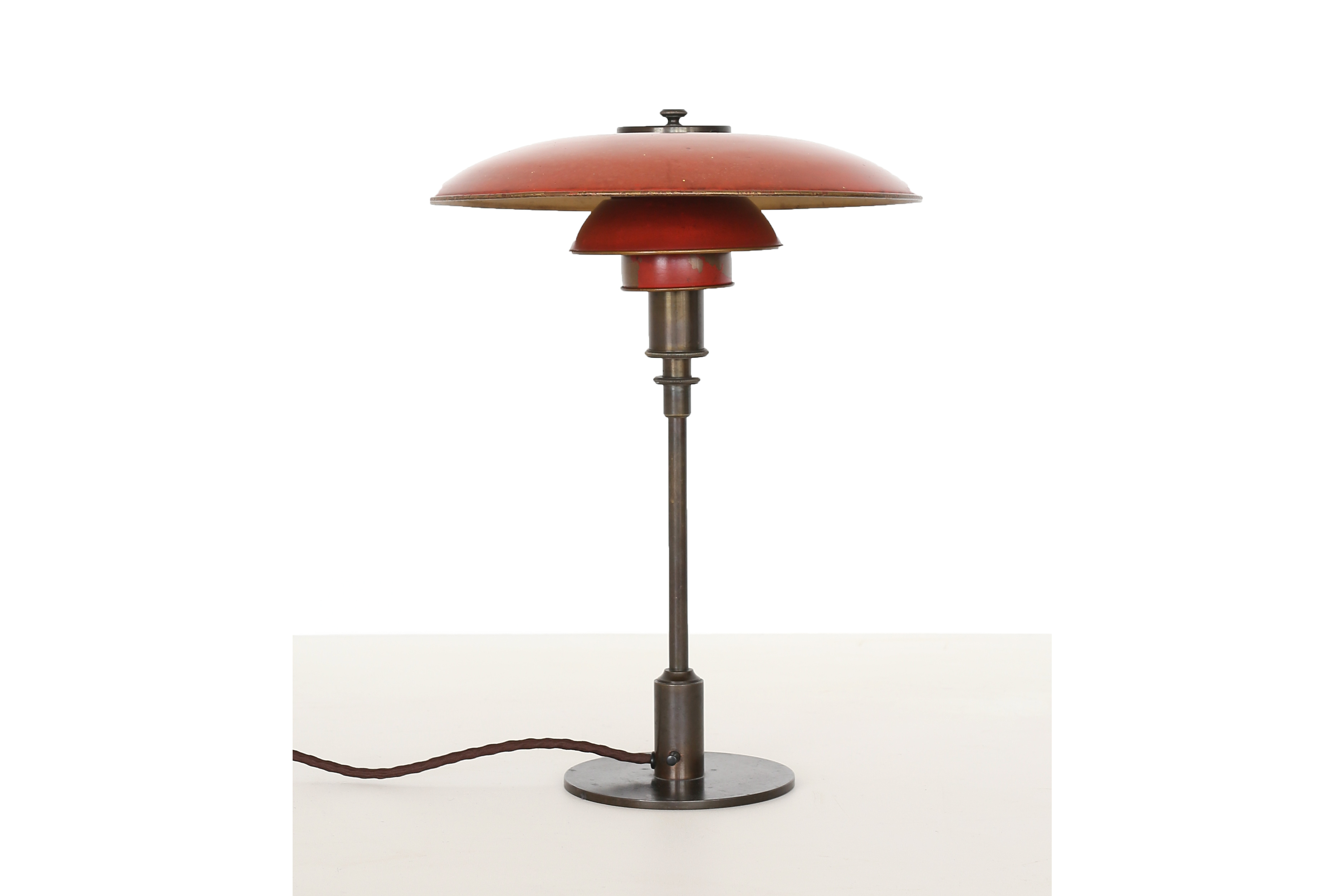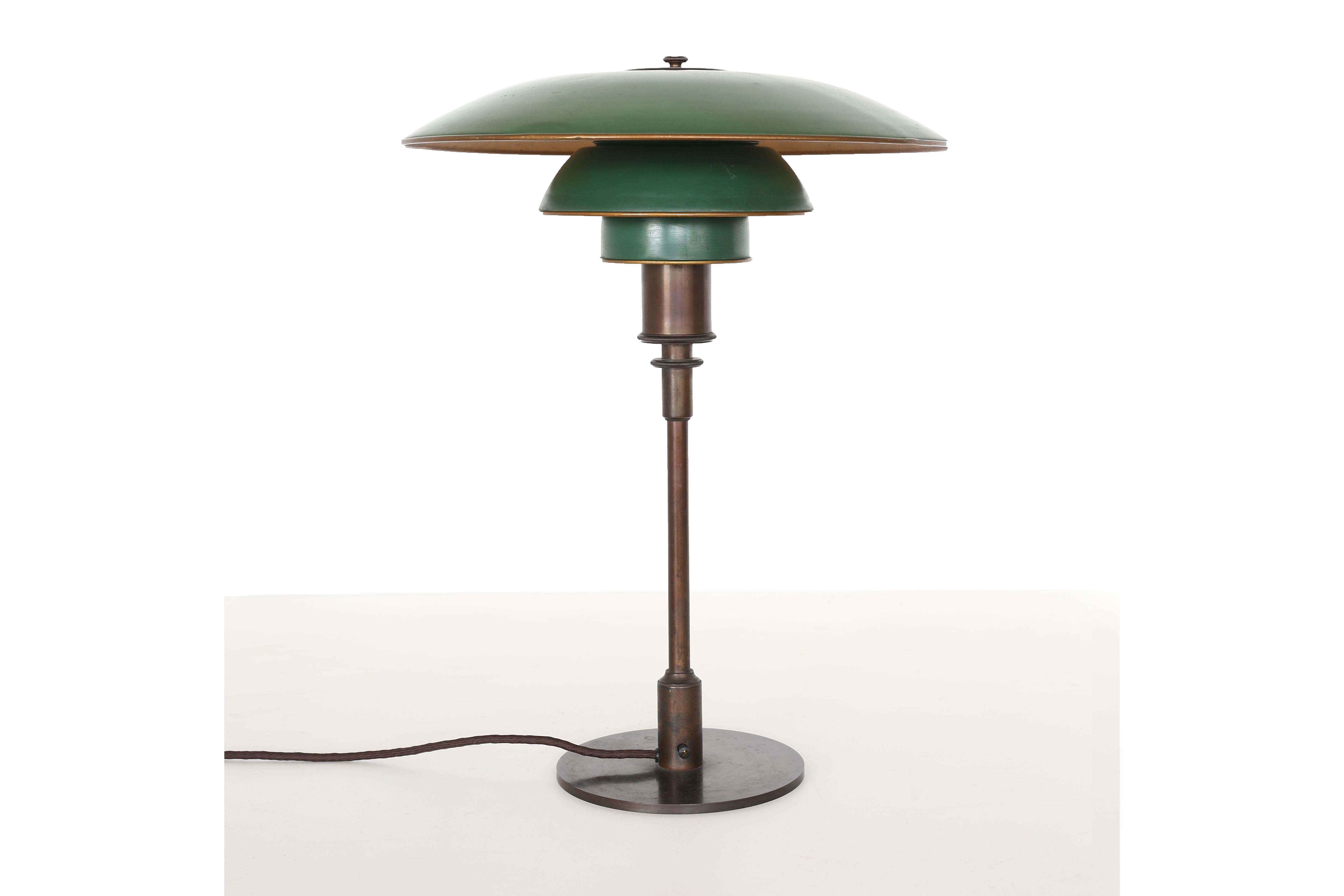At the gallery we currently have several early Poul Henningsen lamps available, please see images below and read more about this important and charismatic figure within Danish Modern design.
For further information about the lamps, pricing and additional images, please contact us by e-mail, phone or visit the gallery in Copenhagen Tuesday to Saturday by appointment.
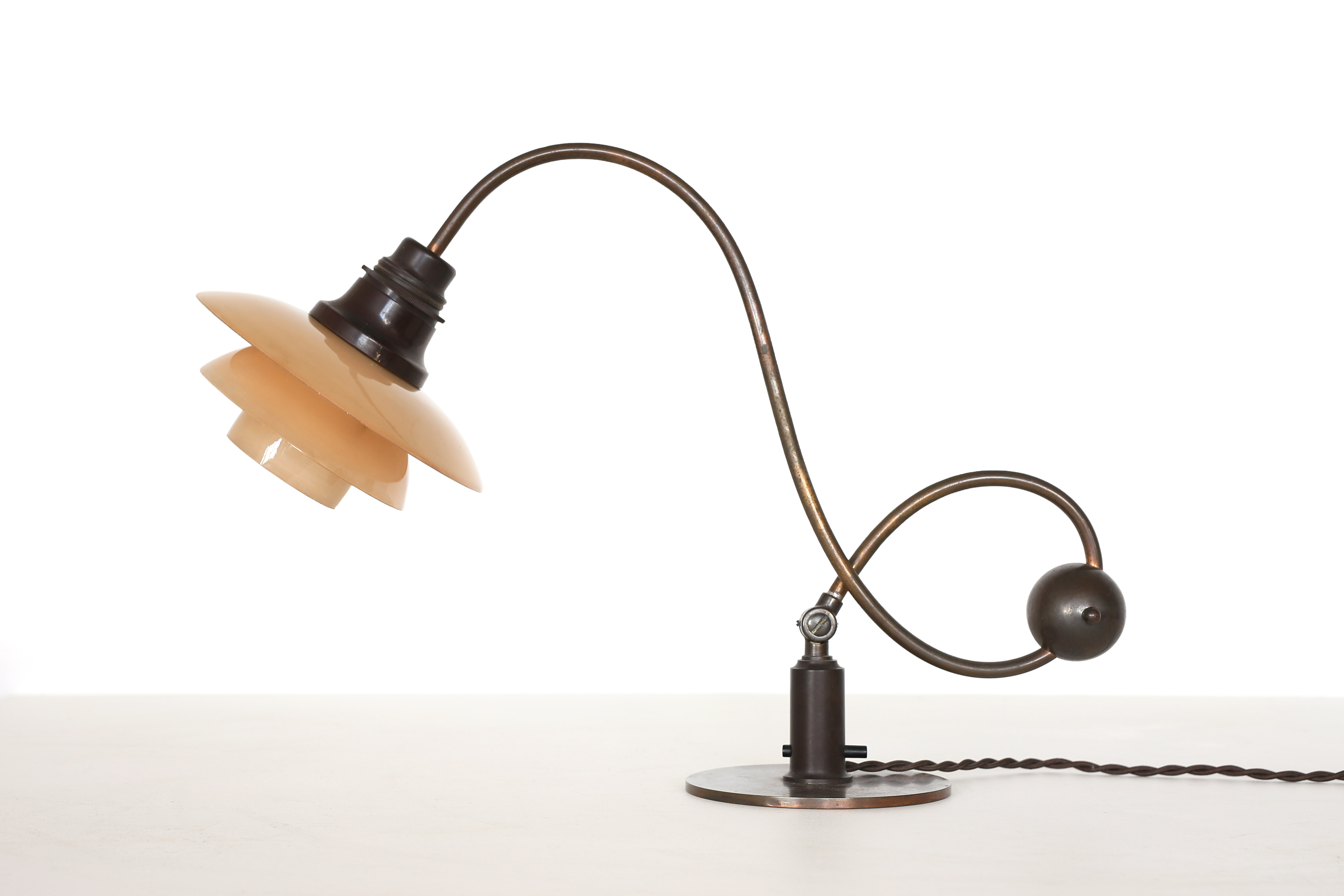
Poul Henningsen attended the Tekniske Skole in Copenhagen from 1911 until 1914 and then studied architecture at the Polyteknisk Laeranstalt from 1915 until 1917. In 1920 he started working as a journalist and critic for several newspapers and art publications, expressing radical social and cultural positions and formulating the basis for a functionalist aesthetic. His experimentation with lighting began during the same period, and his breakthrough came when he teamed up with Louis Poulsen & Co. for the 1925 International Exhibition in Paris, where his multi-shade lamp won first prize.
PH’s mission to improve lighting in Denmark was grounded in his experience, over the turn of the 20th century, of the widespread transition from petroleum to electric lighting. The incandescent bulb emitted a harsh, dazzling light, and over the early ‘20’s PH worked on developing a lamp that would restore the soft, warm quality of the petroleum lamps he grew up with. It was in 1926 that, in collaboration with Louis Poulsen, he arrived at the design that achieved this result: the three-shade lamp, otherwise known as the PH lamp.
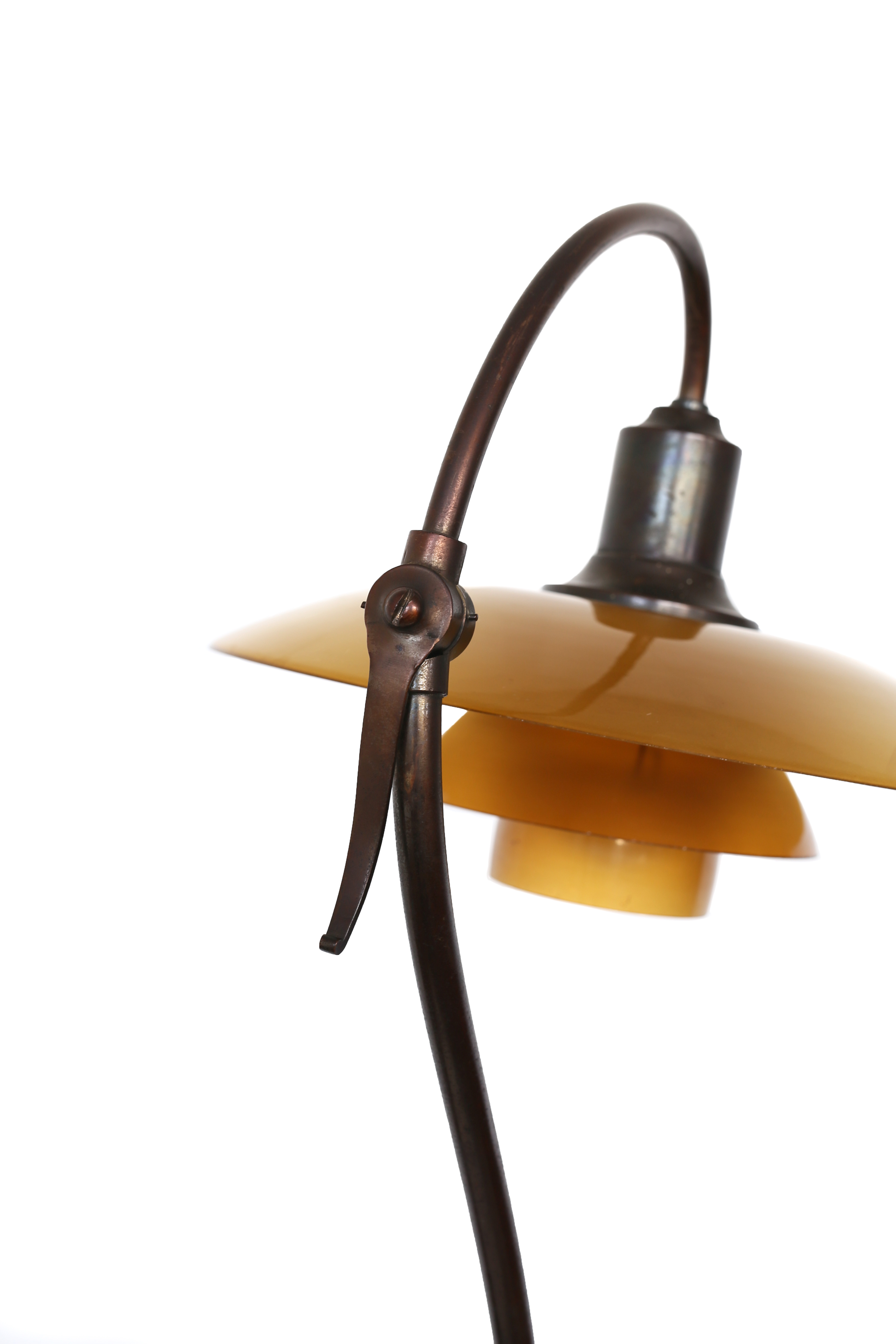
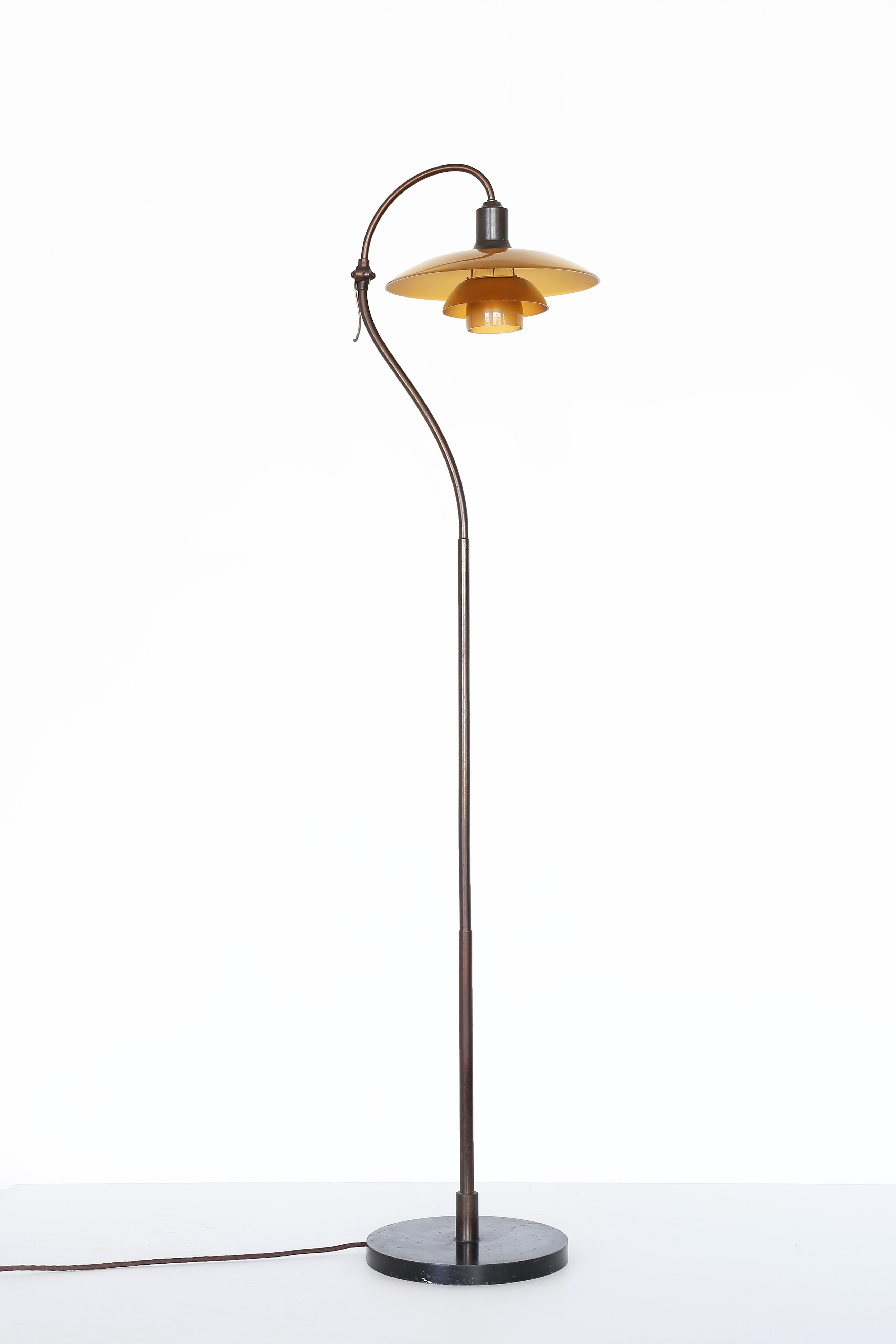
Through a scientific approach that measured factors such as light distribution, efficiency level, and shadow formation, PH invented a three-shade structure: the top shade was plate-shaped, the middle bowl-shaped, and the bottom cup-shaped. The curvature and relative size of the shades was determined by the need to reduce glare, with each one reflecting a specific amount of the bulb’s light. Initially available in five different sizes, this structure became a modular system that, by combining different shade sizes, materials, surface finishes, and colors—for instance, opal or frosted glass in red or yellow; white lacquered or gold-leaf covered metal—served different purposes and settings.
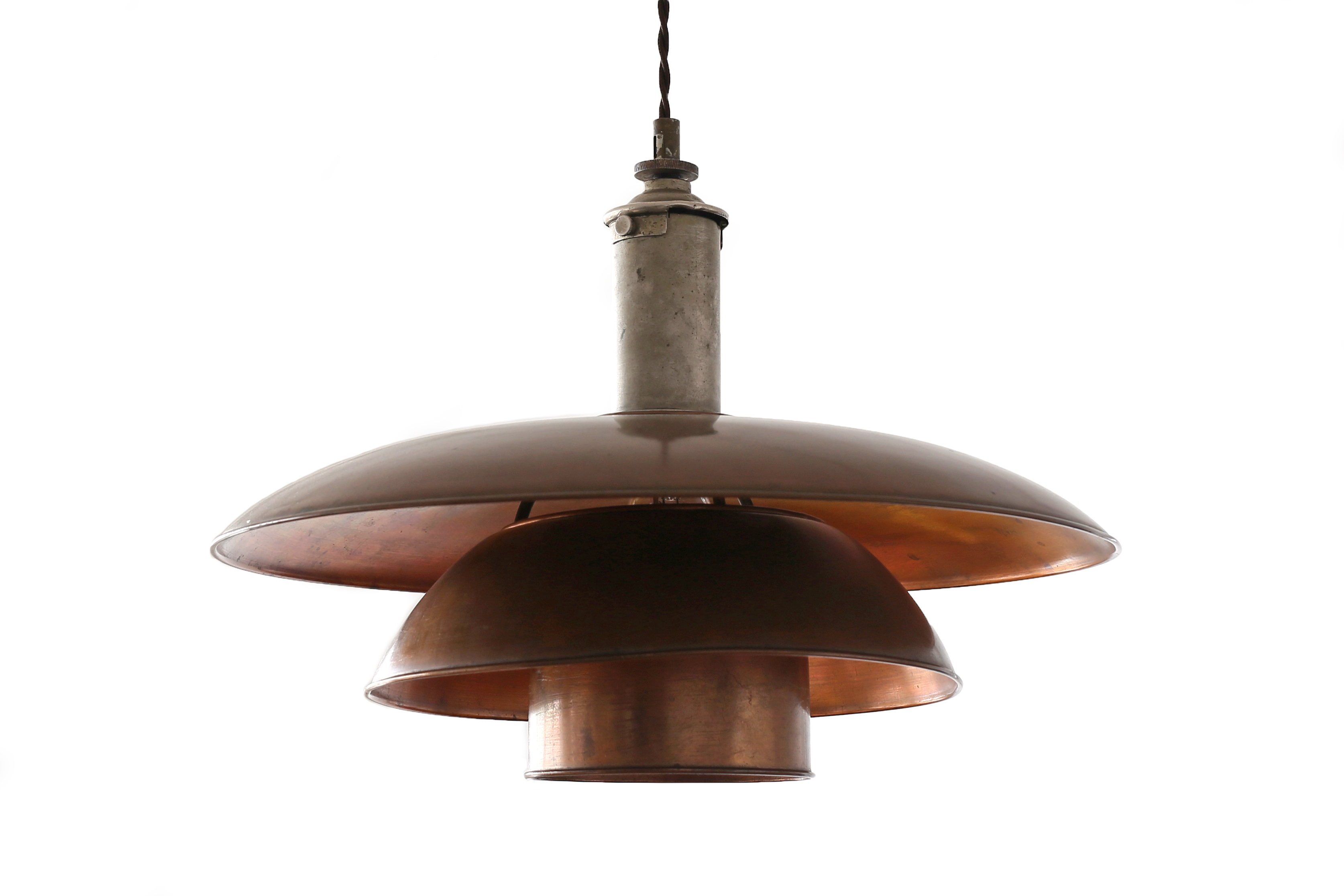
Soon after introducing the three-shade lamp, PH began producing all manner of variations using the same system: table lamps, floor lamps, wall fittings and chandeliers. Through his lifetime he also issued numerous other classic lamp designs, like the PH 5 and the Artichoke, not to mentioned other varieties of lighting tailored for public, industrial, and occupational purposes.
Beyond creating popular designs, PH was instrumental in promulgating the idea that good lighting is key for a good quality of life, and if only for that, his impact on modern design and society has been immeasurable.
